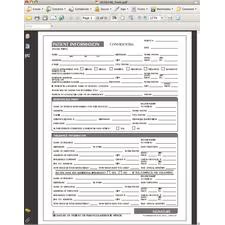 In today’s digital-first environment, many dental practices are re-evaluating their reliance on paper clinical forms. From intake forms to medical histories and consent documentation, the choice between digital and paper isn’t always straightforward. If your practice is considering making the switch, it’s important to weigh the pros and cons of each system—and understand how to transition without creating disruptions for your team or your patients.
In today’s digital-first environment, many dental practices are re-evaluating their reliance on paper clinical forms. From intake forms to medical histories and consent documentation, the choice between digital and paper isn’t always straightforward. If your practice is considering making the switch, it’s important to weigh the pros and cons of each system—and understand how to transition without creating disruptions for your team or your patients.
The Case for Paper Forms
Paper forms have long been the standard in dentistry. They’re familiar, require no tech training, and don’t rely on an internet connection or software. However, they come with limitations—paperwork piles up quickly, requires physical storage, and can easily be misplaced or damaged. Retrieving and organizing paper files also consumes valuable administrative time.
The Case for Digital Forms
Digital clinical forms, on the other hand, offer a streamlined, environmentally friendly solution. Patients can complete them from home before their appointment, reducing wait times and front-desk congestion. Because they integrate directly into most practice management systems, digital forms minimize manual data entry and reduce the risk of human error. While some team members or patients may need time to adjust, the long-term gains in efficiency and data accuracy are hard to ignore.
Steps for a Smooth Transition to Paperless
That said, switching to digital isn’t just about uploading PDFs. Practices must evaluate their current workflow, choose HIPAA-compliant software, and invest in proper staff training. Starting small—by digitizing just a few frequently used forms—can ease the transition. Clear communication with patients is also essential to ensure they understand how to access and complete forms online.
Despite the initial learning curve, most practices find that going digital improves patient experience, enhances recordkeeping, and supports a more modern, connected practice. Paper won’t disappear entirely—at least not right away—but digital forms are quickly becoming the new standard. Is your team ready to make the leap?



